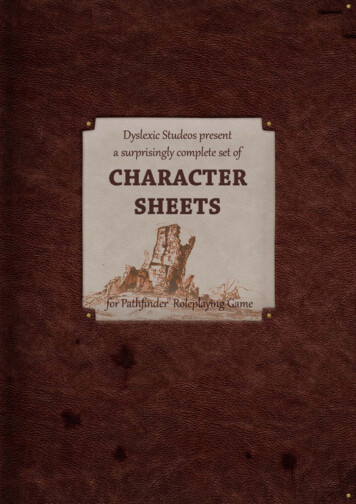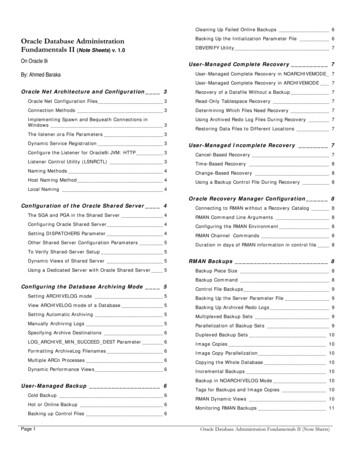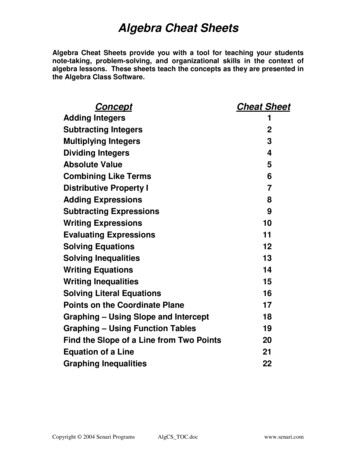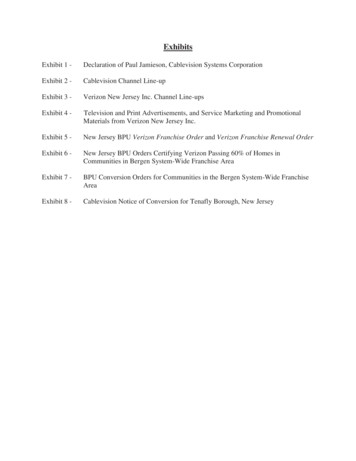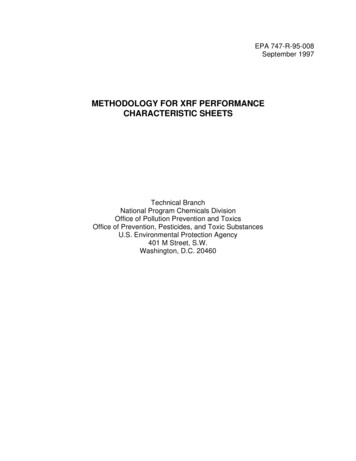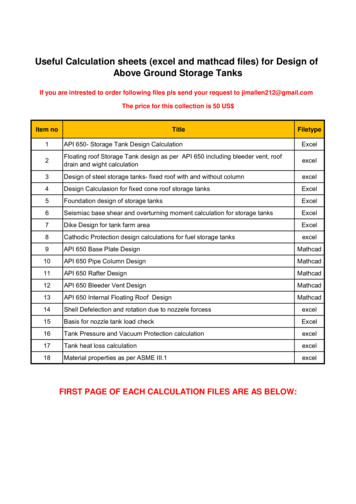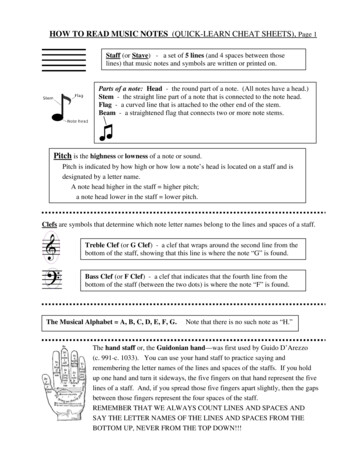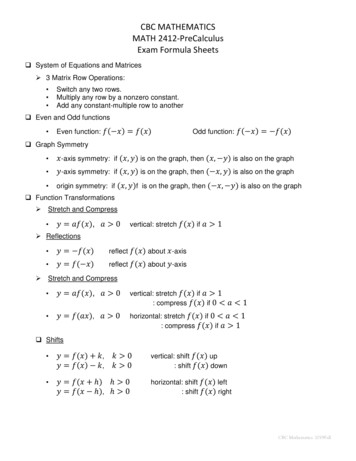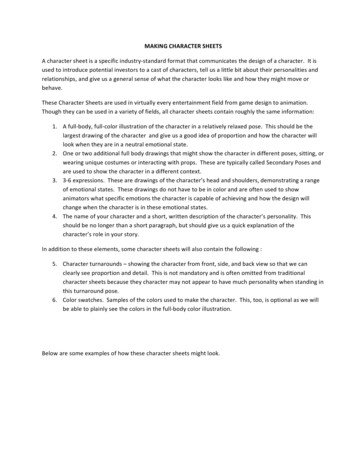
Transcription
MAKING CHARACTER SHEETSA character sheet is a specific industry-standard format that communicates the design of a character. It isused to introduce potential investors to a cast of characters, tell us a little bit about their personalities andrelationships, and give us a general sense of what the character looks like and how they might move orbehave.These Character Sheets are used in virtually every entertainment field from game design to animation.Though they can be used in a variety of fields, all character sheets contain roughly the same information:1. A full-body, full-color illustration of the character in a relatively relaxed pose. This should be thelargest drawing of the character and give us a good idea of proportion and how the character willlook when they are in a neutral emotional state.2. One or two additional full body drawings that might show the character in different poses, sitting, orwearing unique costumes or interacting with props. These are typically called Secondary Poses andare used to show the character in a different context.3. 3-6 expressions. These are drawings of the character’s head and shoulders, demonstrating a rangeof emotional states. These drawings do not have to be in color and are often used to showanimators what specific emotions the character is capable of achieving and how the design willchange when the character is in these emotional states.4. The name of your character and a short, written description of the character’s personality. Thisshould be no longer than a short paragraph, but should give us a quick explanation of thecharacter’s role in your story.In addition to these elements, some character sheets will also contain the following :5. Character turnarounds – showing the character from front, side, and back view so that we canclearly see proportion and detail. This is not mandatory and is often omitted from traditionalcharacter sheets because they character may not appear to have much personality when standing inthis turnaround pose.6. Color swatches. Samples of the colors used to make the character. This, too, is optional as we willbe able to plainly see the colors in the full-body color illustration.Below are some examples of how these character sheets might look.
7.
Again, the sheets must contain: At least one full body illustration of your character in a pose. Full color.At least 3 expressions showing the character’s bust and head in various poses.A single paragraph describing the character, titled with the character’s name.At least 2 secondary drawings that show the character in different full body poses.HOW TO BEGIN DESIGNING A CHARACTERIn addition to formatting, another thing that all of our industries share is the strategyfor creating compelling, well-designed characters. The best way to begin working ona character design is to begin with silhouettes.
Notice that you can tell a great deal about each of the above characters simply bylooking at the silhouette. The characters’ attitudes are readable, even without thedetail pass. Notice the use of repeating shapes in many of the characters. Workingin silhouette before adding detail helps ensure that the design will be consistentfrom head to toe and that the character will appear unified. Notice that Mickeymouse is a series of circles. Look at how Marge and Bart Simpson are basically thesame head-shape, flipped upside-down and then horizontally. Notice that the Pink
Panther looks like a musical note.This works with more realistically proportioned characters as well. Once thesilhouette is readable and presents a strong style, the detail will only help accentuatethat style. However, detail will not save a bad silhouette.
We also want to stay loose because asilhouette can be interpreted in different ways. A shape like this might be filled inwith detail in different areas.We don’t want to ‘lock on’ to an idea for detail too quickly or we might miss an opportunity to do somethingunexpected. Once you get a few silhouettes that you like, try allocating detail in different ways and thendecide which is the most effective.
We really want to avoid designs that have boring silhouettes, or designs which createcharacters with interesting heads, but with boring bodies.
This is what we want to avoid! A standard ‘men’s room’ style silhouette. This is notexpressive. If I add an interesting head to this character, the body is still dull andboring.In this case, the design doesn’t carry through the silhouette. Below, you will seeadditional examples of poorly incorporated detail. All of the silhouettes below arethe same! We cannot “save” these by adding detail because they are fundamentallyflawed.
Instead, think about ways the silhouette can communicate the character’spersonality and predilections from head to toe.This is a much more successful silhouette so, once detail is added, the results aremore unified and impressive. This works with simple, cartoony characters as well.
MAKING CHARACTER SHEETS A character sheet is a specific industry-standard format that communicates the design of a character. It is used to introduce potential investors to a cast of characters, tell us a little bit about their personalities and relationships, and give us a general sense of what the character looks like and how they might move or behave. These Character Sheets are used in .
